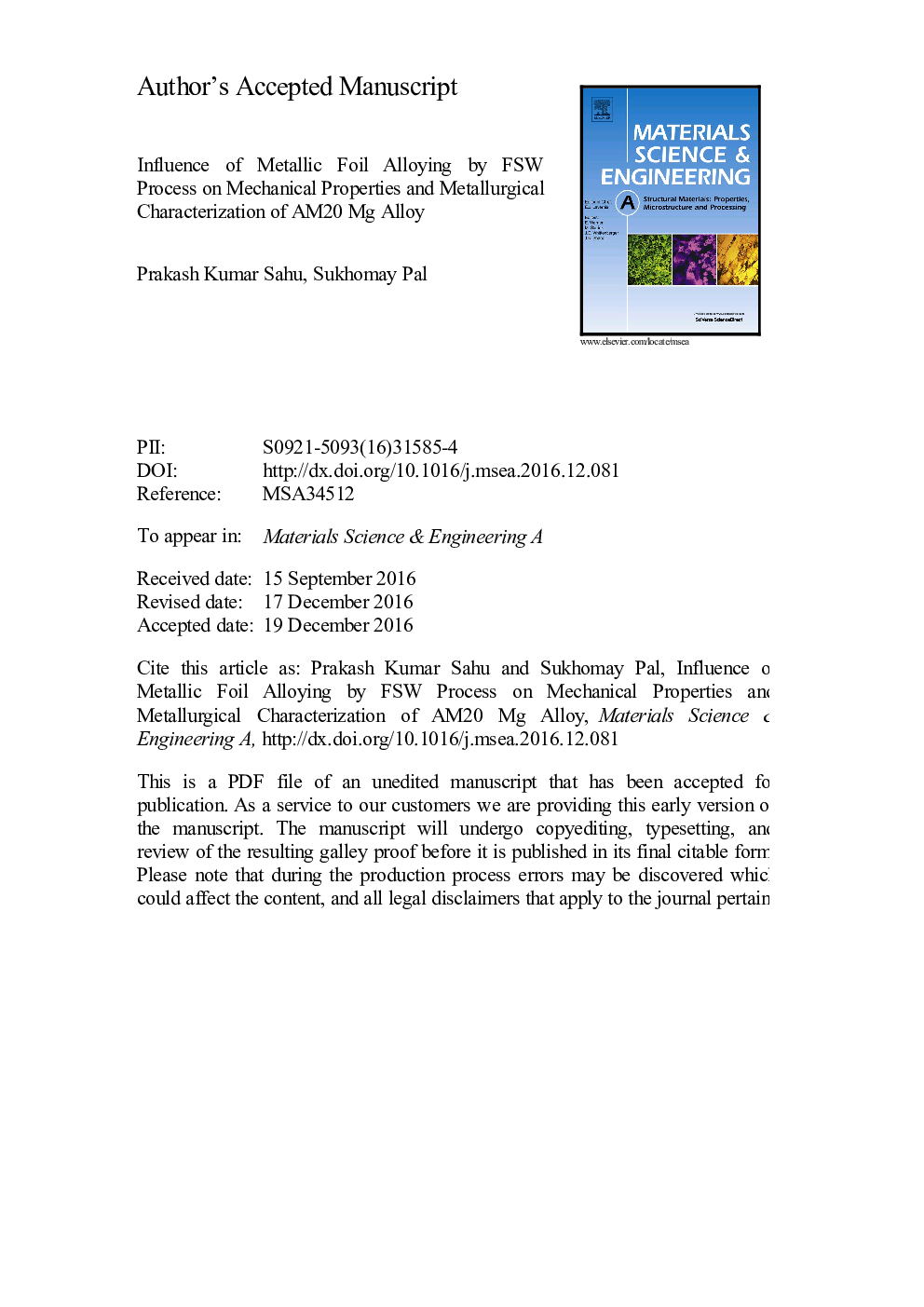| Article ID | Journal | Published Year | Pages | File Type |
|---|---|---|---|---|
| 5456330 | Materials Science and Engineering: A | 2017 | 28 Pages |
Abstract
In joining of AM20 magnesium alloy using friction stir welding process; Al and Zn are used as alloying element at the joint interface to act as an interlayer material. Mechanical and metallurgical properties of the joints with and without interlayer materials are compared. Defect free joints with sound mechanical properties are obtained with suitable alloying element at optimized parameter settings. Joints with Al and Zn interlayer results in 77% and 90% of ultimate tensile strength (UTS) of base material (BM), respectively. On the other hand, it is observed that without interlayer the UTS of the joint is only 65% of BM. Fractograph analysis of the tensile tested specimens reveal ductile fracture in the joints with interlayer whereas without interlayer mixed fracture is observed in the joints. Maximum flexural strength with Zn interlayer is around 87% of the BM. The micro-hardness increased from bottom to top surface of the weld with maximum hardness at the nugget compared to other zones. Weld specimens with Al and Zn interlayer give higher hardness compared to without interlayer cases. The influences of the alloying element on the metallurgical properties are characterized by phase analysis. The addition of appropriate amount of Al in Mg substrate increases the contents of Al-base solid solution namely Al12Mg17 and AlMg intermetallic compounds that eliminates stress concentration and hinders crack propagation resulting in improved tensile strength. The addition of Zn with Mg substrate formed MgZn eutectoid structure with Mg7Zn3 structure and unreacted Mg resulting in improved mechanical properties.
Related Topics
Physical Sciences and Engineering
Materials Science
Materials Science (General)
Authors
Prakash Kumar Sahu, Sukhomay Pal,
